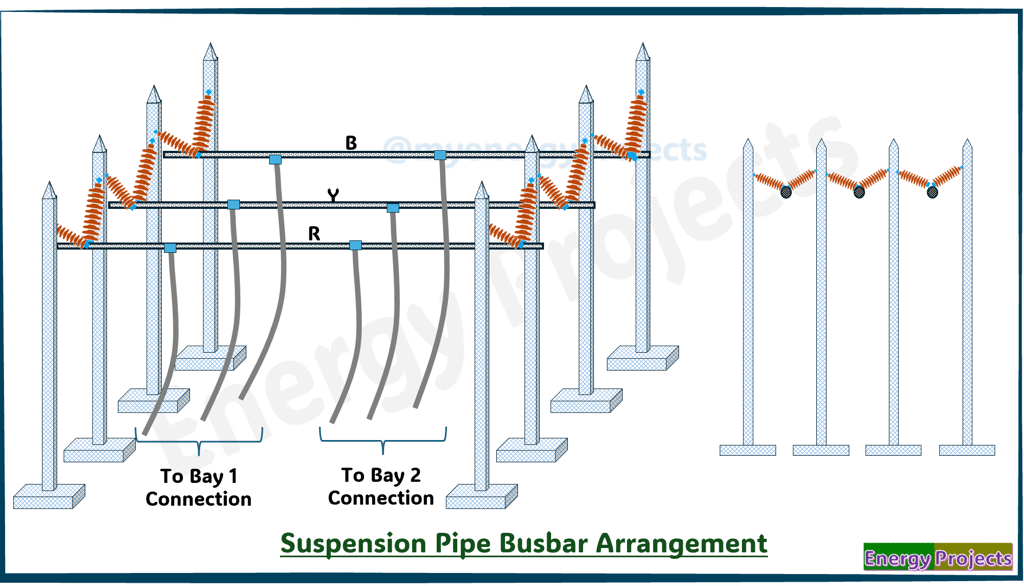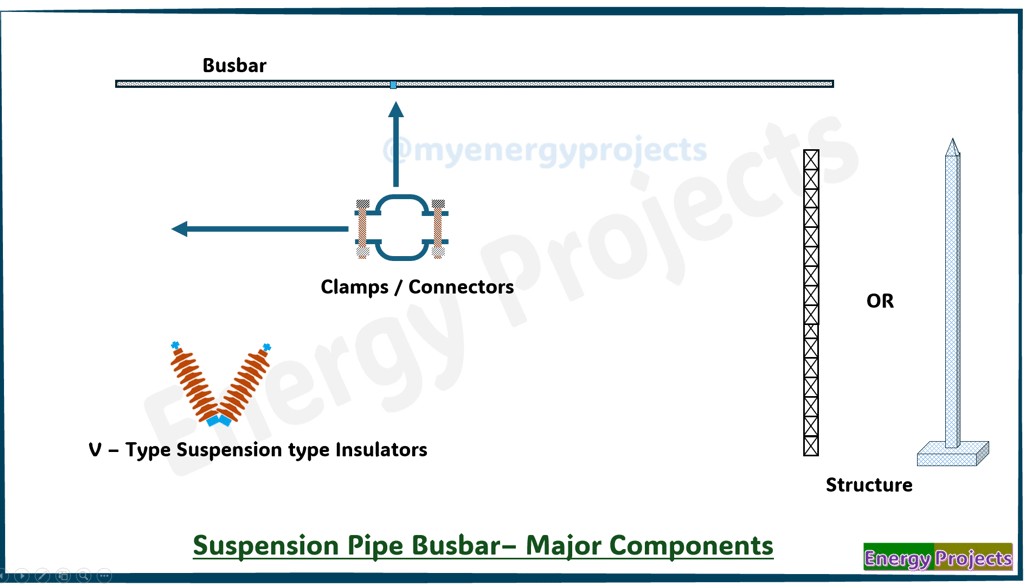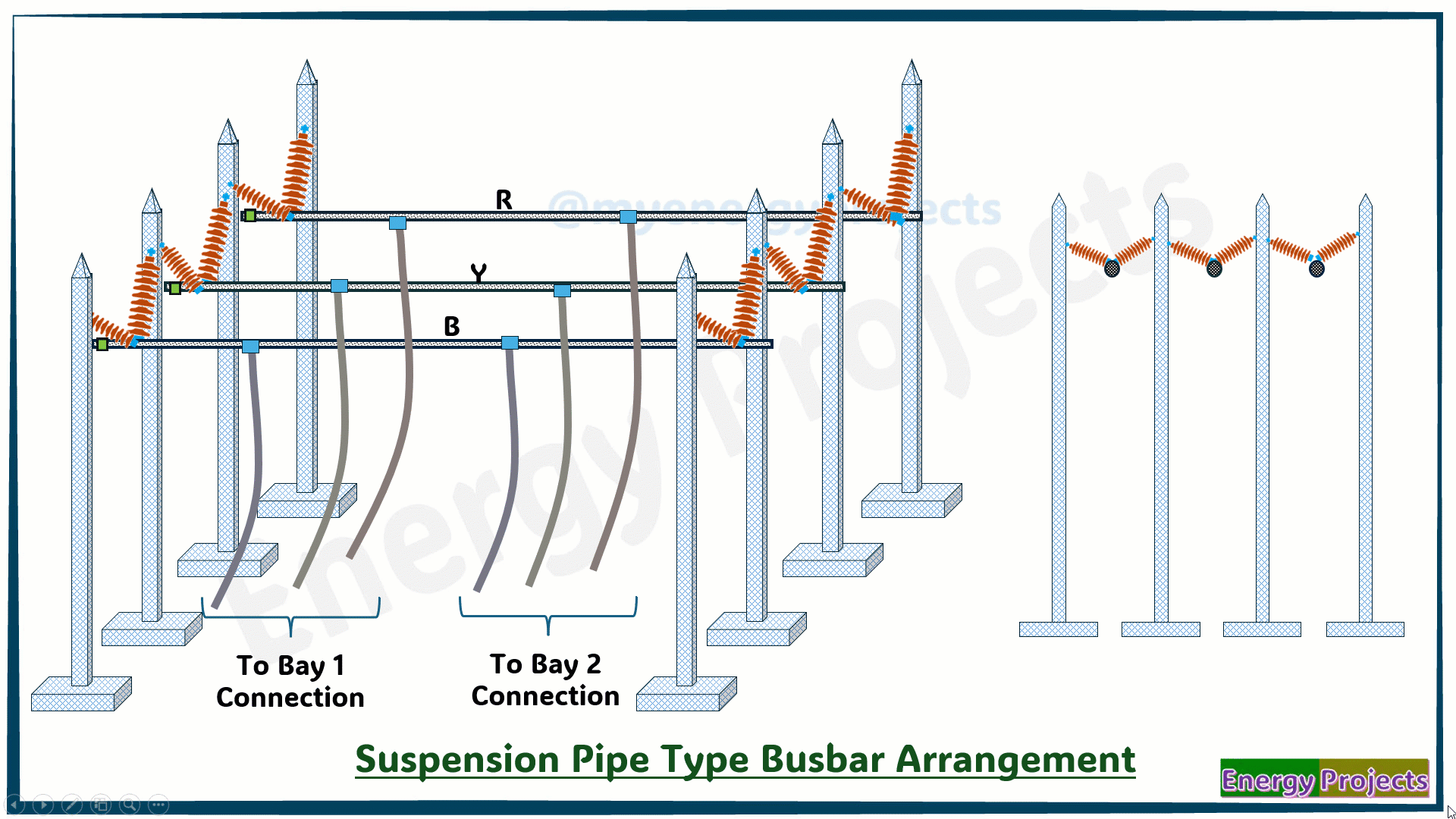03.Suspension Pipe Type Busbar Arrangement
Track Sequence of Engineering
A Suspension Pipe type Busbar Arrangement is a type of electrical busbar setup where hollow, tubular conductors (pipes) are used to carry current, and these pipes are suspended from the structure above—typically from the ceiling or a steel framework.
Advantages of Suspended-Type Pipe Busbar Arrangement:
Flexible Installation – The suspended pipe design allows for long spans between supports and is adaptable to various substation layouts.
Cost-Effective – It uses lighter supporting structures and reduces the need for heavy foundations, lowering both material and construction costs.
Reduced Structural Load – The hollow pipe design makes the system lighter, placing less stress on the supporting framework.
Ease of Expansion – Future upgrades or extensions can be carried out more easily by adding sections without major structural changes.
Tolerant to Movement – The suspended setup can accommodate minor shifts from thermal expansion or structural settling without damage.
Disadvantages of Suspended-Type Pipe Busbar Arrangement:
Lower Mechanical Rigidity – Compared to rigid busbar systems, the suspended pipe type may be more prone to oscillation or mechanical sway.
Conductor Sag and Clearance Issues – Suspension requires careful design to control sag and maintain safe phase-to-phase and ground clearances.
Increased Maintenance Needs – Regular inspection is necessary to monitor the condition of insulators, clamps, and suspension points.
Exposure to Environmental Conditions – Being open and elevated, the system is affected by wind, temperature fluctuations, and weathering.
Larger Installation Footprint – Due to suspension, adequate spacing is needed to account for swing and phase separation, making the layout less compact.
Rigid busbar - Major Components
Busbar
Clamps / Connectors
Structure
V type - Suspension type Insulator / Suspension type Insulators
Busbar:
In a suspension pipe busbar arrangement, the busbar is a tubular conductor, typically made of aluminum or copper. It is designed to carry large currents while offering mechanical strength and better cooling through natural air circulation. The pipe shape reduces resistance and supports stable power transmission. Suspended from above, it also helps save floor space in electrical installations.
Clamps / Connectors:
Clamps and connectors in suspension type busbar arrangements ensure secure electrical and mechanical connections between flexible conductors and equipment terminals. Typically made from aluminum or copper, they may be tin- or silver-plated to minimize contact resistance and corrosion. Common types include compression connectors, tension clamps, and suspension clamps designed to hold the conductor under tension. These components are built to withstand high currents, mechanical loads, and environmental exposure in outdoor high-voltage installations.
Structure:
The supporting structure forms the mechanical backbone of the suspension pipe busbar system. It is typically made of steel or aluminum, grounded for electrical safety, and designed to support the weight of the busbars and insulators. Depending on the installation, the structure may be of the polo type (pole-mounted) or tower type, offering flexibility for different layouts. It must also withstand external forces such as wind, vibrations, and seismic activity.
V-Type / Suspension-Type Insulators:
Suspension-type insulators are used to hang the busbars while electrically isolating them from the support structure. The V-type configuration offers better mechanical stability and reduces movement caused by electrical or mechanical loads. Made from porcelain, glass, or polymer, they can withstand high voltage and environmental stress. These insulators are essential for both safety and system durability.
Operation:
You can see the operation of busbar arrangement.






